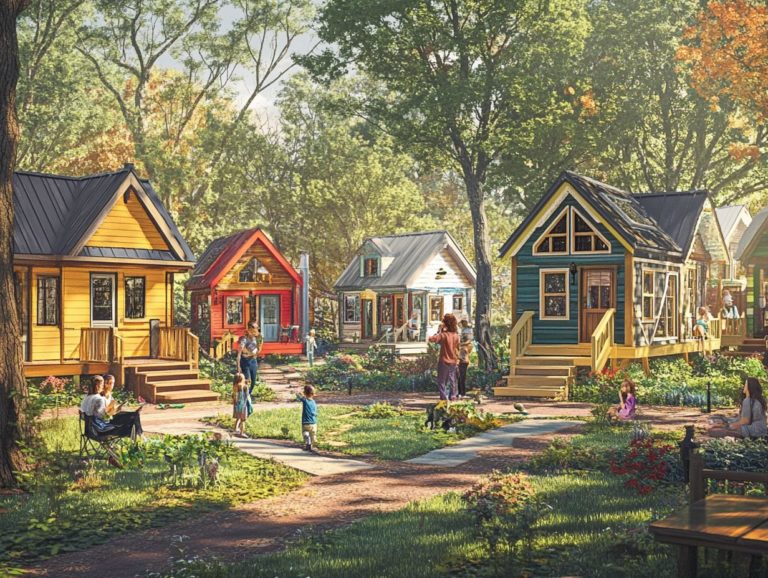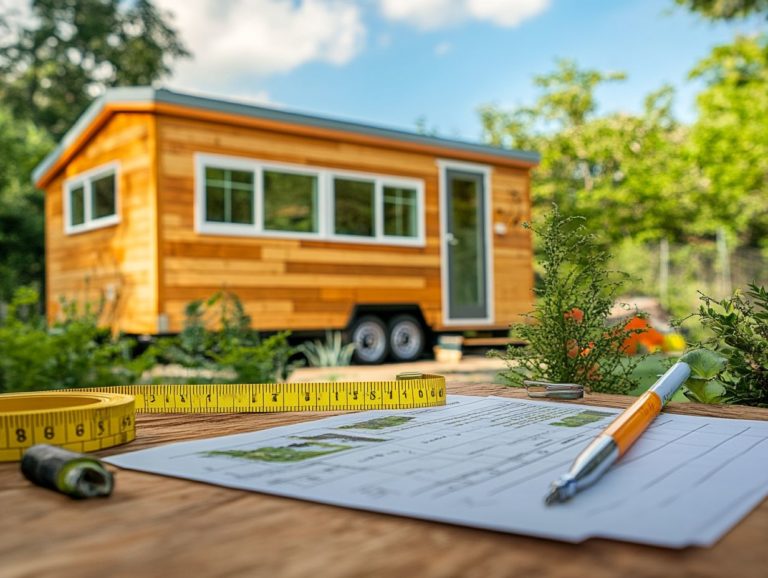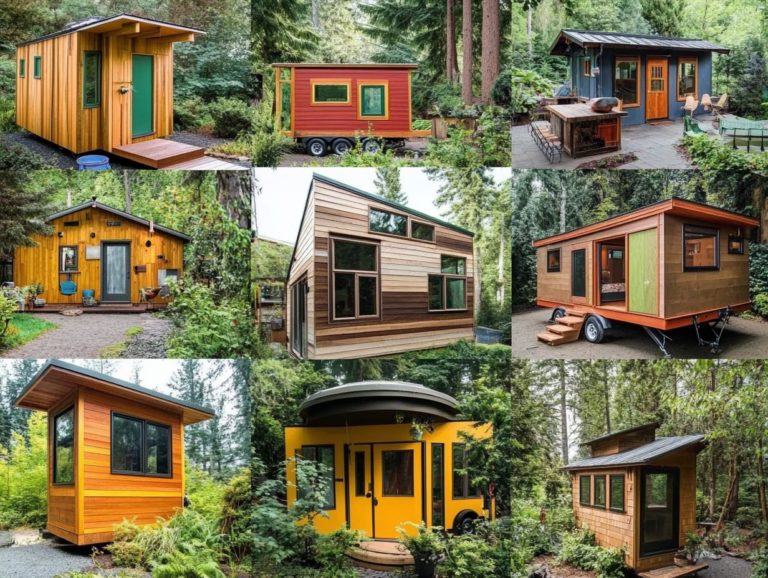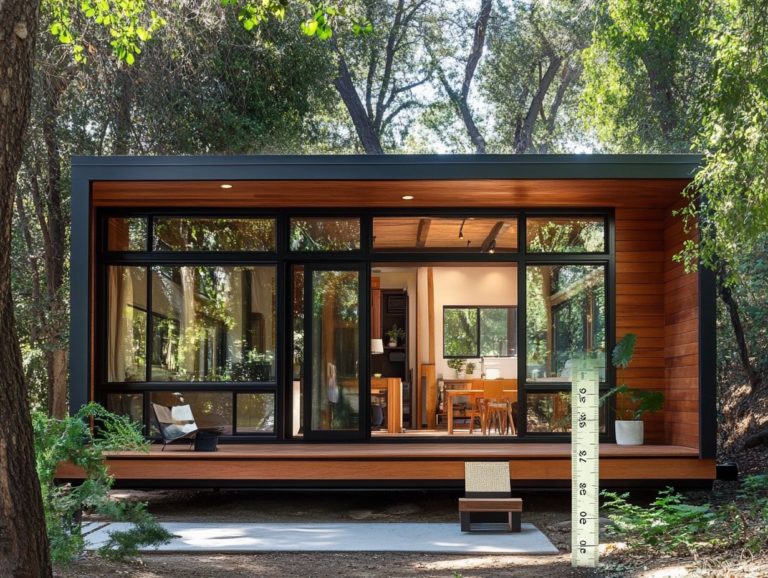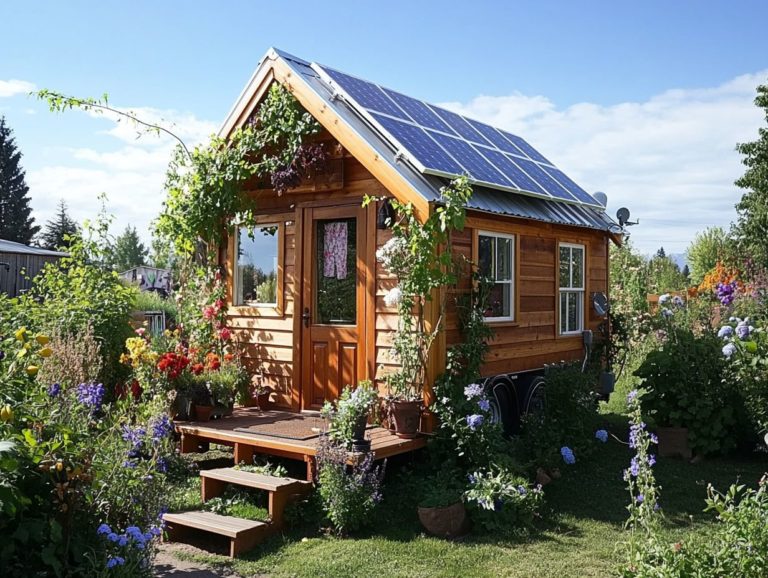How Much Does a Tiny House Cost?
Curious about the tiny house movement and its associated costs? This article delves into what defines a tiny house, showcasing its distinctive features and eco-friendly charm. It explores the affordable option for many Americans.
It examines various factors that influence tiny house pricing. These factors include size, design, location, and materials.
You’ll uncover the average expenses tied to building or purchasing a tiny home, along with a cost estimator to help you plan. Discover savvy strategies for saving money.
Whether you’re contemplating a minimalist lifestyle or searching for an affordable housing solution like a Tiny Home in New Jersey, this guide will equip you with all the insights you need.
Contents [hide]
Key Takeaways:
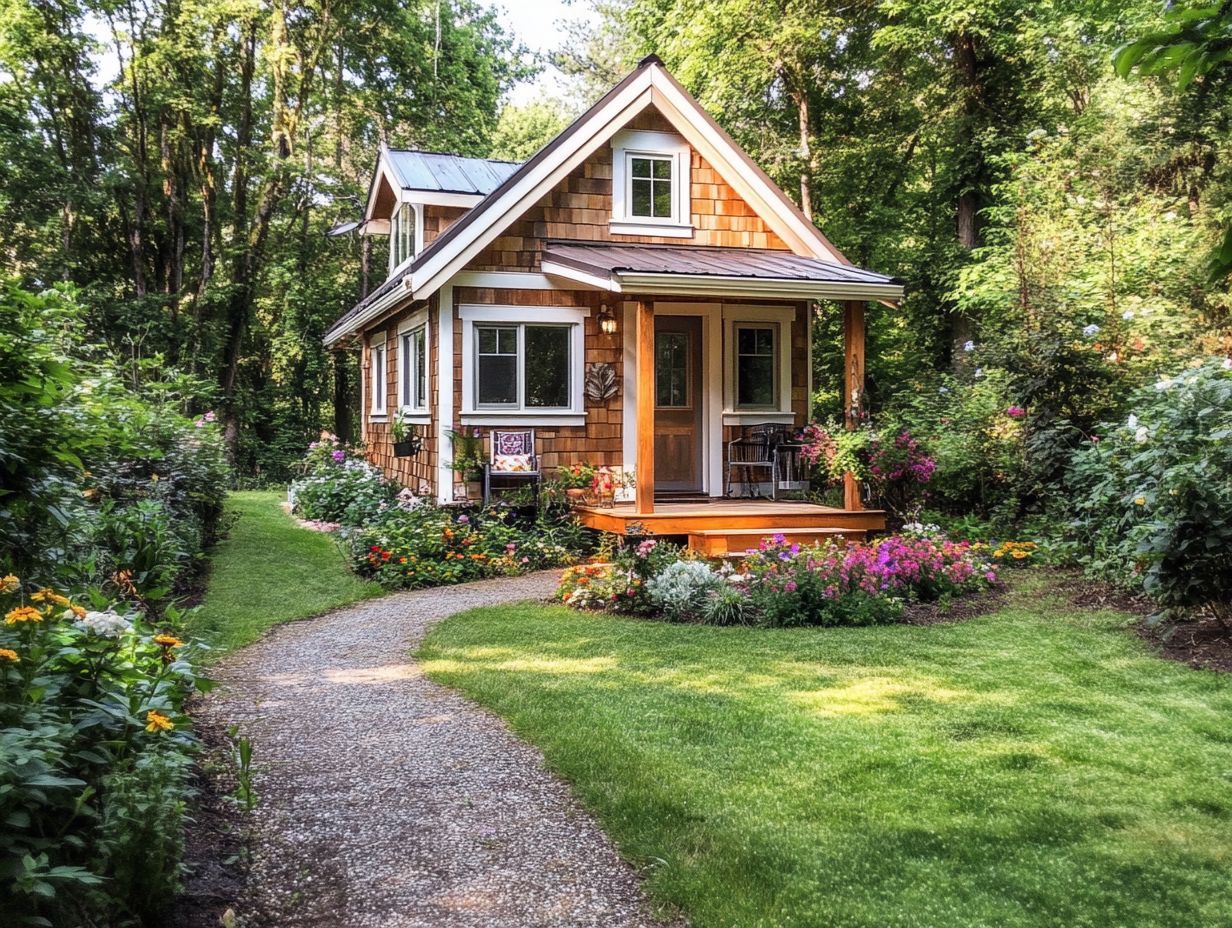
- Tiny houses are small, mobile homes focused on minimalism and sustainable living.
- The cost of a tiny house can vary greatly depending on factors such as size, location, materials, and customization.
- Building a tiny house yourself and using alternative materials can help save on costs. Living off-grid, or living without dependence on public utilities like water or electricity, can also be a budget-friendly option.
What is a Tiny House?
A tiny house represents a compact and efficient living space, usually encompassing less than 400 square feet. It’s expertly designed to maximize comfort and functionality while minimizing environmental impact.
The tiny house movement has particularly resonated with you and others in the Millennial and Gen X demographics. It offers an affordable path to homeownership and small living spaces without the weight of traditional housing expenses.
These small living spaces champion sustainability and encourage a minimalist lifestyle. They make an excellent choice for anyone considering downsizing or embracing off-grid living.
Definition and Characteristics
Tiny houses are defined by their compact nature, typically ranging from 100 to 400 square feet. They boast unique features that set them apart from traditional homes.
These small living spaces offer remarkable design flexibility, enabling you to customize every nook and cranny to align with your lifestyle. Many tiny houses come equipped with multifunctional furniture, like foldable tables and Murphy beds, which is essential for Tiny House Nation enthusiasts.
You ll often find compact kitchens outfitted with energy-efficient appliances, solar panels, and innovative storage solutions cleverly hidden throughout the home. The custom-built options available enhance energy efficiency and incorporate sustainable materials, making tiny living both practical and eco-conscious.
This minimalist lifestyle brings a profound sense of freedom, giving you the power to prioritize experiences over possessions.
Factors Affecting the Cost of a Tiny House
The cost of a tiny house can fluctuate significantly, influenced by a range of factors. These include building permits, land expenses, the prevailing prices of construction materials, and the utilities necessary for sustainable living, such as maintenance and repair costs.
Each element plays a crucial role in shaping your overall investment.
Dive in and discover how you can start your tiny house journey today!
Size and Design
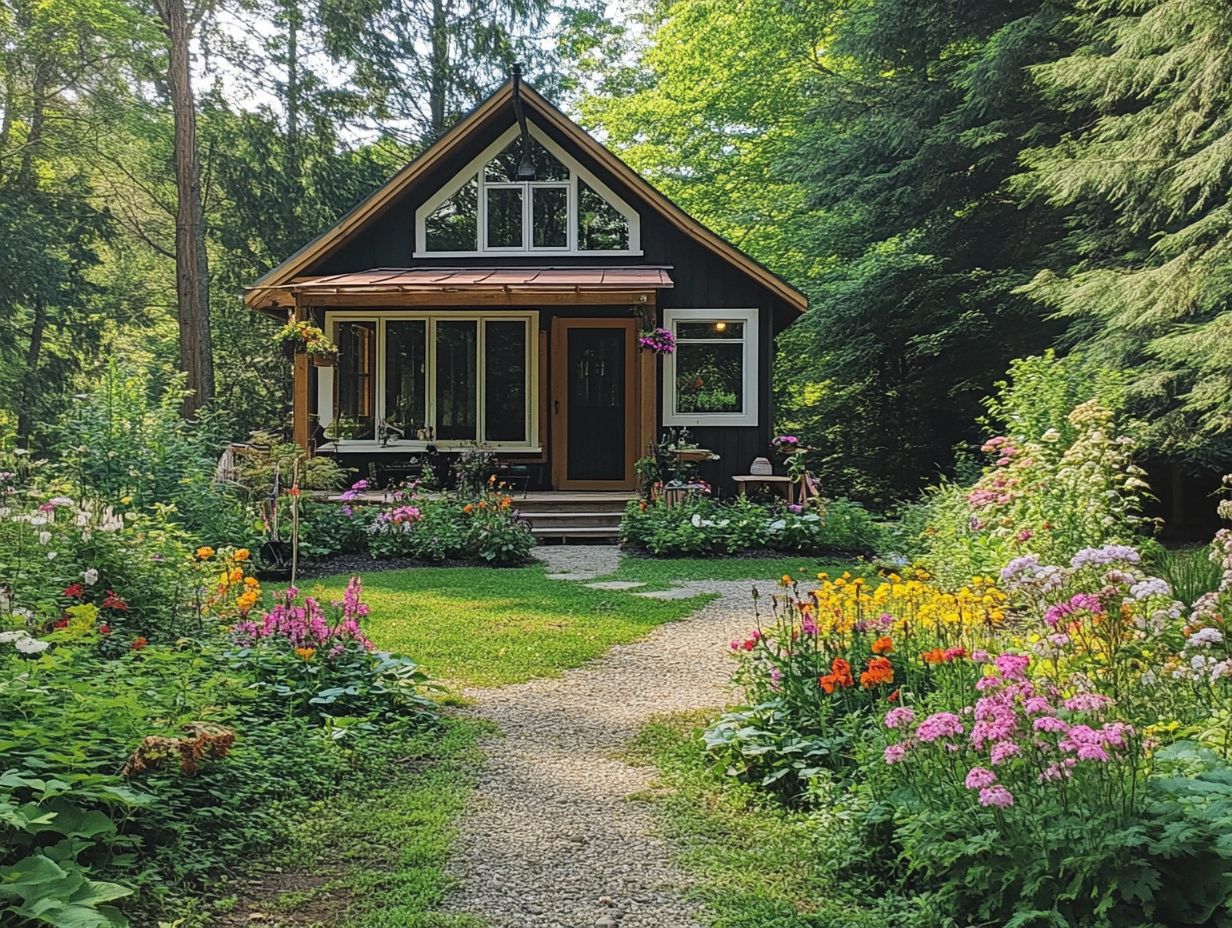
The size and design of a tiny house play a crucial role in determining its overall cost. With most tiny homes being significantly smaller than the average U.S. dwelling, you have the opportunity to explore innovative layouts and custom-built solutions.
This contrast opens up a world of possibilities for creating personalized spaces that align with your lifestyle. It also reshapes the pricing dynamics; fewer square feet can lead to considerable savings.
As the trend toward minimalist living gains traction, you ll likely love contemporary design elements like multifunctional furniture and eco-friendly materials. These choices enhance the aesthetic appeal and practicality of these compact spaces.
In comparison, traditional homes typically come with a higher cost due to their larger size and standard amenities. While incorporating custom features such as lofted sleeping areas, built-in storage, and energy-efficient appliances can influence costs, many view these choices as valuable investments in a more sustainable and fulfilling lifestyle.
Location and Materials
Location is a critical factor in determining the cost of a tiny house, as land prices can fluctuate dramatically. Your choice of building materials significantly impacts both expense and environmental sustainability, including potential foundation costs, which refer to the preparation needed to support your tiny house.
In urban areas, you ll find land prices soaring compared to rural counterparts, which can significantly affect your total costs. Zoning laws, or rules that govern where you can place your tiny home, might also dictate accessibility and the costs associated with utilities like water and electricity.
By choosing eco-friendly options, you not only lessen your carbon footprint but can also reduce utility bills over time thanks to improved energy efficiency. Selecting the right location and sustainable materials can strike an ideal balance between your initial investment and long-term savings.
Customization and Features
Customization in tiny houses gives you the power to tailor your living space, integrating unique features that embody the spirit of the tiny house movement an emphasis on individuality and functionality that can also affect your overall costs.
Imagine having adjustable shelving that maximizes vertical space or multi-purpose furniture designed to make the most of every precious square foot. These choices boost your comfort and make your home more practical while reflecting trends in tiny house pricing.
Many individuals opt for eco-friendly materials, solar panels, or energy-efficient appliances. These features can significantly impact initial pricing while offering long-term savings.
Don t overlook the importance of understanding building permits! Local regulations can dictate which features you can incorporate, influencing your design choices, overall timeline, and budget for your project.
Understanding these requirements ensures that your dream of a personalized tiny home remains a fulfilling journey rather than a logistical headache.
Average Cost of a Tiny House
The average cost of a tiny house typically falls between $30,000 and $60,000, influenced by factors like foundation expenses, utility installations, and personalized features. This makes tiny homes a more budget-friendly alternative to traditional houses, especially for Millennials and Gen X seeking affordable options.
Breaking Down the Expenses
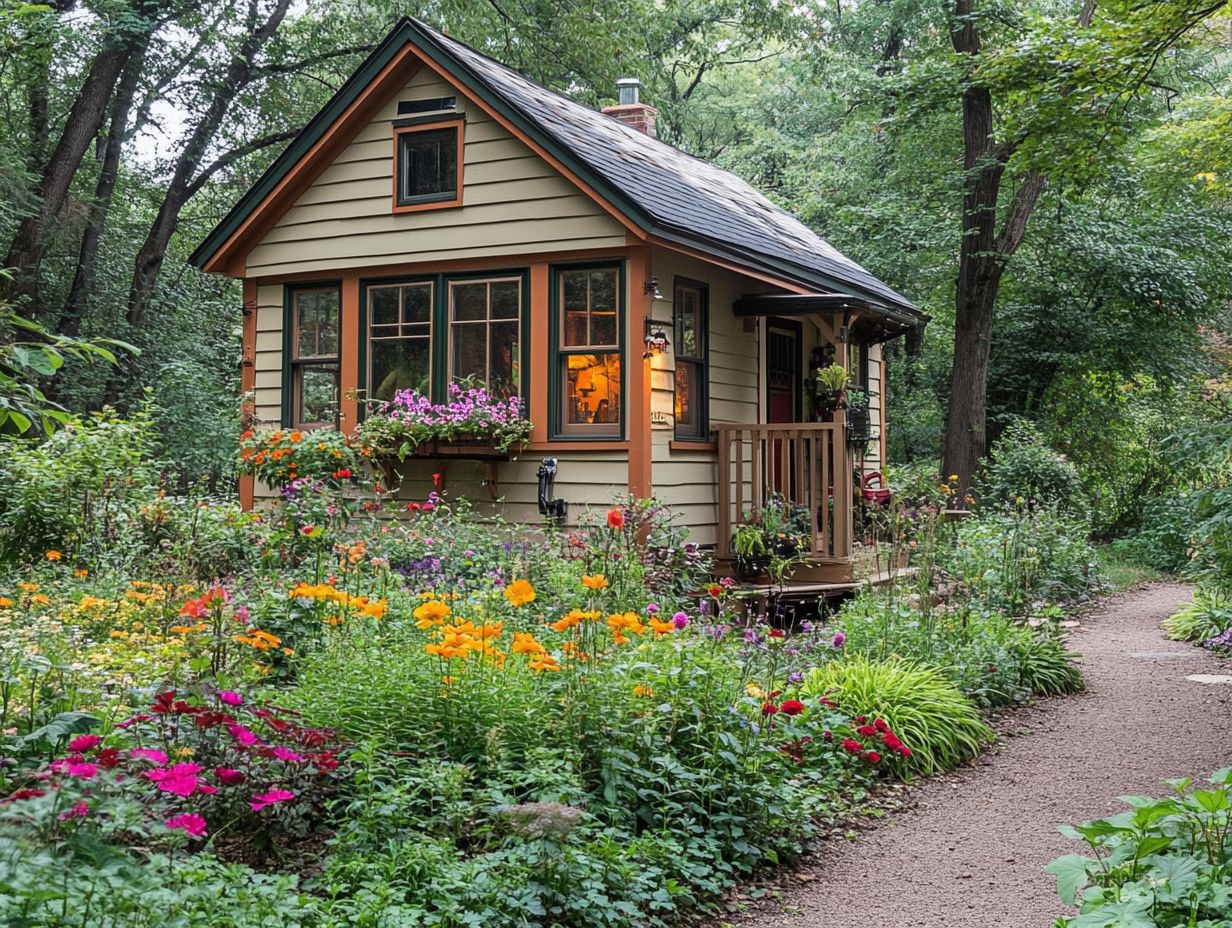
Breaking down the costs of a tiny house involves taking a closer look at several expense categories, including land costs, building permits, utilities, and construction materials. Each of these can significantly influence your total budget.
Understanding these expenses in detail is essential for anyone contemplating the tiny house lifestyle. For instance, land costs can vary dramatically based on location and zoning regulations. Don t forget about the potential for unexpected fees related to building permits.
You ll need to factor in utilities like water, electricity, and waste management. These can fluctuate depending on your usage and provider. It s also wise to consider the costs associated with high-quality construction materials. While selecting sustainable and energy-efficient options may require a higher initial investment, they can lead to savings in the long run.
All these financial considerations are crucial in assessing the overall feasibility of your tiny house project.
Ways to Save on Tiny House Costs
Want to save money on tiny house living? Try these strategies!
Discovering methods to trim expenses associated with tiny house living can enhance the allure of this housing choice. Consider implementing strategies like engaging in DIY projects to reduce tiny house costs:
- Engaging in DIY projects
- Utilizing alternative materials
- Exploring off-grid living options
all of which can significantly reduce your costs.
DIY Building and Alternative Materials
Engaging in a DIY project to build a tiny house can significantly reduce your costs, especially when you opt for alternative materials available through resources like Tiny House on Wheels. These materials are both sustainable and budget-friendly.
By choosing materials like reclaimed wood, repurposed shipping containers, or even straw bales, you can craft unique living spaces. This approach minimizes your environmental impact and cuts down on overall expenses. Customization becomes more attainable, enabling you to tailor your tiny home to fit your lifestyle needs and aesthetic preferences.
Selecting alternative resources gives you the power to create spaces that truly reflect your values. This makes the entire process not just cost-effective but also deeply rewarding.
Considerations for Off-Grid Living
Off-grid living has become an enticing option for those drawn to the tiny house movement. Here, sustainability reigns supreme, and reliance on utilities is dramatically reduced often resulting in impressive cost savings. This makes it a popular choice in places like Alabama and New York.
This lifestyle choice not only champions eco-friendliness but also fosters a profound connection with nature. It enhances your self-sufficiency. By utilizing solar panels, implementing rainwater collection systems, and opting for composting toilets, you can significantly lessen your environmental footprint while achieving independence from conventional utility sources.
However, this journey is not without its hurdles. Ensuring a consistent power supply and managing limited resources can be quite the challenge, particularly in harsher climates. The initial investment in eco-friendly systems might give some pause. This underscores the necessity for meticulous planning and unwavering commitment to truly thrive in the off-grid lifestyle.
Frequently Asked Questions
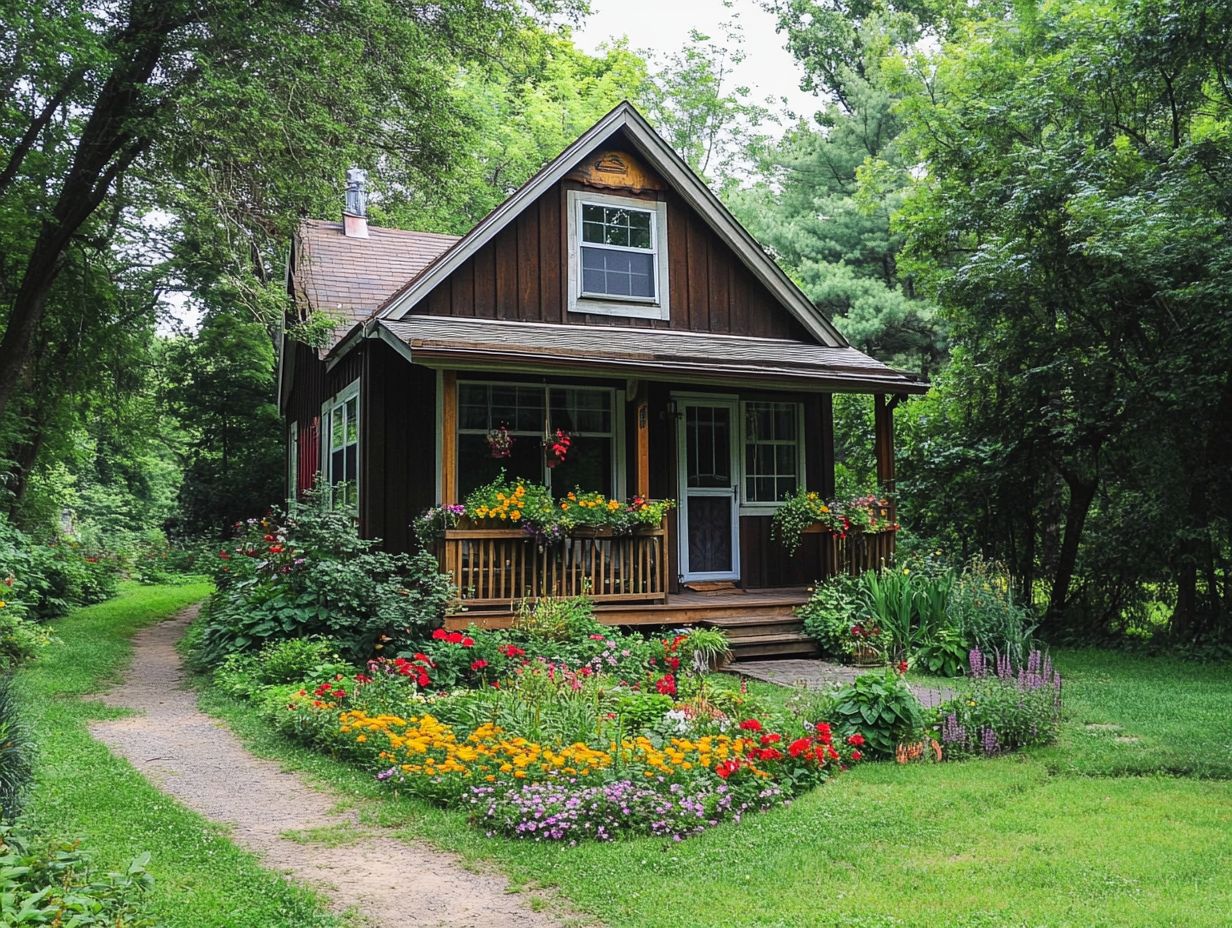
How much does a tiny house cost?
The cost of a tiny house varies based on size, materials, and location. Typically, it ranges from $10,000 to $80,000, much lower than the average U.S. home.
Many Millennials and Gen X individuals are choosing this affordable housing option.
What is the cheapest way to build a tiny house?
The cheapest method is to use reused materials and do the construction yourself. This approach saves money but requires more time and effort.
How can I finance a tiny house?
You can finance a tiny house through personal loans, RV loans, or crowdfunding where many people contribute small amounts. Compare the terms and interest rates carefully before deciding.
Are tiny houses cheaper than traditional homes?
Yes, tiny houses are generally cheaper than traditional homes. However, costs can vary based on location and materials, so do your research.
Can I get a mortgage for a tiny house?
Getting a mortgage for a tiny house is possible but can be tricky. Some lenders do not offer mortgages for tiny houses, so it’s essential to research your options.
What are some additional costs to consider when building a tiny house?
Besides building materials, consider costs for land, permits, utilities, and ongoing maintenance.

